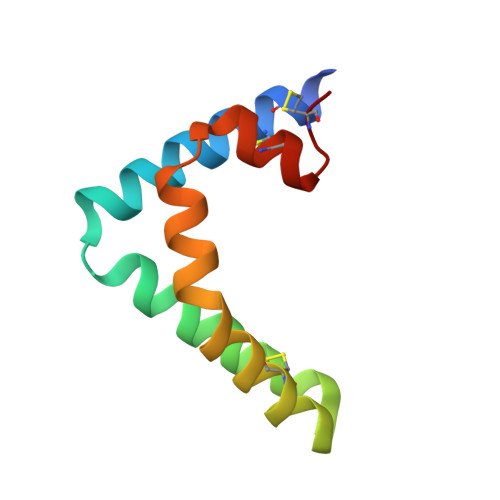The Lysosomal Protein Saposin B Binds Chloroquine.
Huta, B.P., Mehlenbacher, M.R., Nie, Y., Lai, X., Zubieta, C., Bou-Abdallah, F., Doyle, R.P.(2016) ChemMedChem 11: 277
- PubMed: 26616259
- DOI: https://doi.org/10.1002/cmdc.201500494
- Primary Citation of Related Structures:
4V2O - PubMed Abstract:
Chloroquine (CQ) has been widely used in the treatment of malaria since the 1950s, though toxicity and resistance is increasingly limiting its use in the clinic. More recently, CQ is also becoming recognized as an important therapeutic compound for the treatment of autoimmune disorders and has shown activity as an anticancer agent. However, the full extent of CQ pharmacology in humans is still unclear. Herein, we demonstrate that the lysosomal protein saposin B (sapB), critical for select lipid degradation, binds CQ with implications for both CQ function and toxicity. Using isothermal titration calorimetry (ITC) and fluorescence quenching experiments, CQ was shown to bind to the dimeric form of sapB at both pH 5.5 and pH 7.4 with an average binding affinity of 2.3×10(4) m(-1). X-ray crystallography confirmed this, and the first complete crystal structure of sapB with a bound small molecule (CQ) is reported. The results suggest that sapB might play a role in mitigating CQ-based toxicity and that sapB might itself be overwhelmed by CQ causing impaired lipid degradation.
Organizational Affiliation:
Department of Chemistry, Syracuse University, 111 College Place, Syracuse, NY, 13244, USA.















